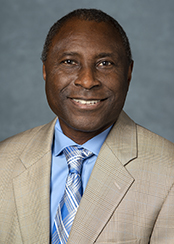Turkson Laboratory

Personal Statement
The research interests of my laboratory are in the area of signal transducer and activator of transcription (STAT)3 signaling for anticancer drug discovery and development. STAT3 is a well-established master regulator of critical molecular and cellular events that promote tumor development and progression. It is a point of convergence of oncogenic tyrosine kinase pathways. We take a multi-disciplinary approach to develop small molecule and natural product inhibitors of STAT3 signaling for potential application as novel anticancer agents. Our current lead small molecules and natural products inhibitors have proven in preclinical studies to be efficacious against the growth of human breast and lung cancers, and glioblastoma models in vivo, and against human LGL leukemia lines and primary patients PBMCs in vitro. The two main objectives now are to conduct advanced optimization for clinical candidate selection and to potentially collaborate with clinicians for therapeutic IITs.
The research is currently funded by the National Institutes of Health and the National Cancer Institute (NCI) as well as an NCI/Leidos Biomedical Research Inc. contract
James Turkson
Breakthrough Research Areas
Small molecule STAT3 inhibitors as novel anticancer drugs.
- We presently have lead azetidine-based inhibitors of STAT3, which are 200–300 nM in potency, and we are conducting advanced lead optimization to tweak the potency and to enhance PK properties in clinical candidate selection.
Natural product drug discovery for STAT3 inhibitors.
- Currently, we are optimizing hirsutinolide natural products that suppress human glioblastoma and breast cancer growth in vitro and in vivo, and studying the mechanisms of antitumor effects that occur via inhibiting STAT3, glucose-6-phosphate dehydrogenase and thioredoxin reductase 1 isoform functions. Extensive ongoing medicinal chemistry efforts seek to optimize the potencies from 3–5 µM to nanomolar and DMPK properties.
Publications
Zhang X, Yue P, Page BDG, Li T, Zhao W, Namanja AT, Paladino D, Zhao J, Chen Y, Gunning PT, Turkson J.
Proc. Natl. Acad. Sci. USA. 2012 Jun 12;109(24):9623-8. PMID: 22623533.
Miklossy G, Youn UJ, Yue P, Zhang M, Chen C-H, Hilliard TS, Paladino D, Li Y, Choi J, Sarkaria JN, Kawakami JE, Chen Y, Sun D, Chang LC, Turkson J.
J Med Chem. 2015 Oct 8; 58(19): 7734–7748. PMID: 26331426.
Yue P, Lopez-Tapia F, Paladino D, Li Y, Chen CH, Hilliard T, Chen Y, Tius MA, Turkson J.
Cancer Res. 2016 Feb 1; 76(3): 652–663. PMID: 26088127.
Lopez-Tapia F, Brotherton-Pleiss C, Yue P, Murakami H, Costa Araujo AC, Reis Dos Santos B, Ichinotsubo E, Rabkin A, Shah R, Lantz M, Chen S, Tius MA, Turkson J.
ACS Med Chem Lett. 2018 Mar 8; 9(3): 250–255. PMID: 29541369.
Contact the Turkson Lab
8700 Beverly Blvd.
Davis Building, 5065
Los Angeles, CA 90048
